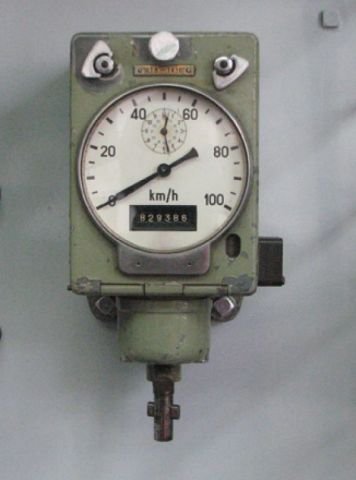MECHANICAL TACHOGRAPH - SPEEDOMETER

-
Item owner - FNM
-
Category - FNM Collection
-
Inventory - 0146
-
Author - Hasler
-
Dimensions - 29x14x12 cm
-
Dating - 1928-1958
Metal box containing a speed indicator dial with a range of 1 to 100 km/hour; clock; window showing total km travelled and indicator of the start and end of the zone. The zone, a roll of special paper with a writing pen, was placed in the box by turning the dial upside-down. Two little sheet metal handles on the top of its front allowed the clock to be wound and adjusted. A little rod with a square section emerged out of the bottom to permit transmission of motion.
The tachograph permitted reading of: Speed in km/hour - Hours and minutes - Distance travelled in km, while continuously recording:
Train speed in km/hour - Distance travelled - Hours and minutes of each single trip - Duration of travel and of stops - With reference to a given train, it made it possible to check if unscheduled stops had been made due to signals or other reasons, and whether scheduled stops had been missed.
At the start of service, the driver had to set and wind up the clock and check the zone, signing it or replacing it if it was about to run out.
The zone consisted of white paper treated with chrome and paraffin to prevent tampering. It was referred to as the "black box” because it recorded essential train operation parameters. In the event of a particularly serious accident, it would be removed for an internal enquiry or seized for use in a court enquiry.